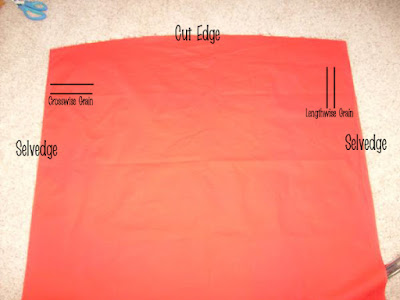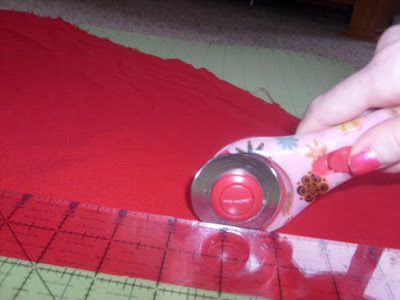I love blankets and have a large collection of them, most are on my bed, but many are in strategic places around the house. I love to cuddle under them, lay upon them, I even wear a lap blanket in the car during the winter! Ironically enough, I had never
made a blanket. And what better blanket to make than a quilt? This isn't a usual how-to tutorial, because I am still perfecting my quilt making skills. So, this is more of a generalization of how I pieced it together.
My first quilt was far from flawless, but to me, it's perfect. It's a small lap quilt, about 40x60 inches (minus a bit here and there!) Here it is strewn across my couch.
As you can see, I used scraps from my pj bottoms to make one of the borders! So, here's what I did.
1. First, I penciled a little diagram of what I wanted it to look like, then I figured out how large to cut each strip of material. I wanted it to be about 40x60, and with each strip, I needed to include a seam allowance as well. The middle panel (Christmas Trees) is 17x37, then I cut 2 pink strips 4x37 (sides) and 2 pink strips 4x24 (top and bottom), then 2 ornaments 7x35 (top and bottom) and 2 ornaments 7x44 (sides). The final pink border was 2 strips 4x55 (sides) and 4x41 (top and bottom). The red is bias tape.
2. Then, I started piecing it together. I serged the pink strips to the sides and then the top of the Christmas trees. I pressed the seams towards the darker material, which was the solid pink.
3. Then, I added the ornament strips and pressed the seams toward the darker material.
4. I added the second border of pink strips and pressed the seam down. Now, the front panel is finished!
5. I laid down my back panel (which was the pink material), laid the quilt batting on top of it, then laid the front panel on top of that. (Quilters refer to this as assembling the "quilt sandwich.") I used curved safety pins every 4 inches all over the quilt to secure it.
6. Then, I quilted it. I only have a regular sewing machine, not a fancy long armed quilting machine that does all sorts of fancy designs, so I just sewed diagonal lines across the entire quilt, using scotch tape as my guide. Other ways to quilt include handquilting (no way do I have that sort of patience), hand tying (every 4 inches or so across the quilt, make a single stitch through all three layers with yarn and tie a knot to secure), "stitch in the ditch" (stitching along the seams of the borders), etc etc. Basically, anything you want to do is acceptable. It is, after all, your quilt.
7. Then it needed to be bound, because the edges were exposed. I made double fold bias tape and pinned the tape to the edges of the quilt. Don't know how to make bias tape? View my tutorial here!
Make Your Own Bias Tape Then I sewed it in place.
There are many different ways to bind a quilt. This was easiest for me, mainly because I don't have the patience to hand sew anything, which hard core quilters seem to love to do.
And there you have it, my very first quilt! It's super cozy.
Were you inspired? Post pictures of your quilts to the
Pineapple Damask Group's Flickr Photo Pool!



















































